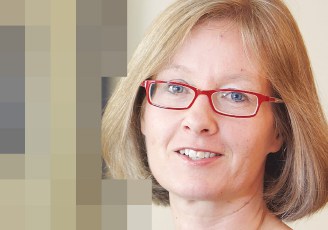Dawn of the digital city
Our increasingly digital world offers opportunities to transform the systems and services we rely on every day. For their take on the potential power of data to improve our urban quality of life, IQ cities correspondent Anne Edelson discusses five big questions on data and cities with Dr. Jaana Remes from the McKinsey Global Institute, Raj Vaswani of Silver Spring Networks and AECOM’s cities visionary Stephen Engblom.

Can you describe the potential offered by collecting data across all areas of the city from housing and water systems to energy production and transportation networks?
The ways in which data can improve efficiency in all of these areas is huge. Better information about traffic route conditions, public services across the city, environmental quality and many other factors can help citizens make better choices and improve the quality of life for city and suburban residents. Simply telling households how their water consumption or waste generation compares with their neighbors can help reduce demand on city services. Collecting and reading data creates transparency into infrastructure functions, for example, it enables city administrators and agencies to pinpoint trouble spots such as leaking water pipes and energy system failures, and then deliver repairs.
When it comes to bridging the financial gap between infrastructure demand and provision, does data offer a solution?
Data can help narrow this finance gap. It can help raise the capacity we get from existing infrastructure by optimizing timing of use (for example, introducing energy or traffic pricing to encourage flexible users to shift their timing away from peak hours), and reducing down time (perhaps by tracking failure risks and providing pre-emptive care). It can also reduce resource waste by identifying leaking water pipes or electricity losses that can be fixed and helping owners and operators examine how to optimize supply to meet demand. It is almost always cheaper and more effective to optimize systems already in existence than to build something new.
Can data also be useful in addressing socio-economic inequities in our cities today? If so, is there a balance to be struck between transparency and privacy?
Transparency is improving equitable public infrastructure and services. It has been proven time and again that what gets tracked gets done. We are more likely to address any inequities by neighbourhood income if we have public data such as broadband speed and cost by neighbourhood, speed of road or water pipe repairs, police response times to emergency calls or waiting times in public sector services.
The opportunities offered by the use of data include being able to respond better to – and anticipate – changes in our cities, and provide what communities need.
Do you consider there to be a significant role for data to play in advancing the policy dialogue on resilience, security and carbon reduction?
Having good data across the whole city makes it possible to pinpoint which areas and aspects of a city are most vulnerable so that city administrators and others can plan, prioritize and be better prepared ahead of time for extreme weather events, for example. Having good information on the carbon implications of different infrastructure, housing, transport and other city choices in turn is necessary for us to be able to make choices that reduce cities’ carbon footprint. Using data can help make better decisions across the board. It is particularly useful in identifying areas that are most at risk which are also often the ones where the most vulnerable communities live.
When using data for developing and building cities, what do you see as the obstacles and opportunities? Can you describe one or two key changes you envision in the coming decade?
The opportunities offered by the use of data including being able to anticipate and respond better to changes in our cities and provide what communities need. Cities could become more citizen-centric and this will lower costs in the long run so they will become more affordable too.
Take the example of making cities better for older people — by far the age group with fastest growth in most cities in the developed world. It would be great to see real estate developed with their needs in mind — more compact and walkable neighborhoods with services more available and self-contained within these planned neighborhoods.

We are at an inflection point in the use of data collection in our cities. Until just a few years ago network and network collection systems were ‘vertical’, that is they operated separately from one another so coordination between different bodies was difficult if not impossible.
Now as data collection, control and data sharing have become horizontal and much improved, we can work across projects together, cooperating and coordinating. This can have genuinely positive impacts on the ways in which city services are delivered or managed. In Copenhagen for example, LED light sensors connect to traffic management systems to make efficient use of streetlights. When the sensors detect elevated volumes of street traffic or an accident on a roadway, connections within the system automatically raise the level of local lighting. The lighting is reduced once the street traffic decreases or the accident is cleared. This efficiency produces significant savings in power costs for the city.
When it comes to bridging the financial gap between infrastructure demand and provision, does data offer a solution?
Creating horizontal data collaboration systems requires a solid return on investment so that city administrators can make the case for investment as a way of making savings and improving services. These horizontal, cross-project collaboration platforms offer numerous benefits in terms of efficient business processes and also with built-in flexibility making it easy to add the next application so that the cost of developing and attaching it is greatly reduced as compared with building a vertical application-specific system.
As networked data collection, control and data sharing have become horizontal and much improved, we can increase leverage across projects, reducing friction and costs to more rapidly achieve proven business benefits.
Can data also be useful in addressing socio-economic inequities in our cities today? If so, is there a balance to be struck between transparency and privacy?
In terms of privacy, the case needs to be made for the benefits of data collection. It is considerably easier to secure cooperation when city residents can experience benefits in terms of the efficiency and investments in water, power and transportation systems. Where people can see value they are more willing to trade some privacy. One of the examples of this in the private sector is OnStar, which works with car owners to unlock the car for you if you lose your keys and alert emergency services should you have a collision. At the same time, OnStar is able to collect data about its subscribers’ driving patterns, which subscribers allow due to the returned value they perceive from the service.
Do you consider there to be a significant role for data to play in advancing the policy dialogue on resilience, security and carbon reduction?
It is already the case that data collection and its approaches deliver real business benefits in terms of resilience. As just one example, the benefits of smart grid technology were proven several years ago after an earthquake in Northern California when Pacific Gas & Electric used its smart grid technology to restore power and get residents back online. This does tie back to setting the bar appropriately and building in adaptability so that we have the data platforms that provide information and flexibility to restore power quickly throughout these regions.
When using data for developing and building cities: What do you see as the obstacles and opportunities? Can you describe one or two key changes you envision in the coming decade?
McKinsey research pegs the potential economic impact for the Internet of Things at as much as US$1.7 trillion per year in 2025 in cities alone. During the coming three to four years, cities administrators will be discussing and tackling the challenges of deploying and solving technology issues within the different infrastructure sectors. These discussions will help cities administrators develop platforms for data collection that can be shared horizontally across agencies. These are the first steps towards joint data collection and sharing. During this phase, administrators will also be looking further at how to organize work horizontally and develop cross-functional teams — essentially creating an organizational structure that mirrors the technology leverage afforded by the horizontal platform. This will present a challenge as it will require new ways of thinking and working.
In the following phase we’ll see information optimized for the different sectors developing platforms that work horizontally. This is actually the easier part of this process. Within the decade we will all be familiar with the opportunities and the benefits of data collection with extensive data sharing producing efficient investments in infrastructure and services and an improved quality of life.

Can you describe the potential offered by collecting data across all areas of the city from housing and water systems to energy production and transportation networks?
Cities today have the capacity to share data across a wide range of projects and demonstrate the co-benefits derived from investment in urban infrastructure. The first adopters in sharing will emerge the strongest in keeping up with population growth and ahead of economic development trends.
Traditionally, city agencies worked in isolation from one another and separate from the private sector; however today, by sharing data and working together holistically, it’s possible to integrate and coordinate projects. This requires a different and collaborative way of working across city agencies and jurisdictions, and the end result is a synergistic approach that shortens project development timeframes, reduces budgets and builds support for projects.
When it comes to bridging the financial gap between infrastructure demand and provision, does data offer a solution?
Data has replaced industry as the primary economic driver of our age and we live in an era where the monetization of data is having a significant impact on modern life. However, there is still a disconnect between providers of traditional urban infrastructure and how to monetize the vast collection of data underway by cities and their agents. The revolution being ushered in by shared-economy companies provides a glimpse of how we might consider monetizing data to help pay for the vast future infrastructure needs. It is only a matter of time before we see an innovative partnership between a data company and cities capturing and deploying infrastructure usage data to make infrastructure self sustaining.
Can data also be useful in addressing socio-economic inequities in our cities today? If so, is there a balance to be struck between transparency and privacy?
Areas most vulnerable to negative climate impacts are also often neighborhoods that are the most socio-economically disadvantaged. In large part these disadvantages and vulnerabilities are due to a lack of adequate infrastructure. Rectifying these infrastructure deficits has proven too expensive when the cost is calculated in isolation. However, in the age of big data we can now draw connections between health and mobility, and the uplift in a city’s ability to attract investment into these neighborhoods when issues such as flooding are resolved. Capturing the value of these figures can help rethink the urban infrastructure equation and close the socio-economic gap.
AECOM has developed a triple-bottom-line calculator that enables infrastructure alternatives to be tested and evaluated on how well the various approaches address environmental, economic and equity indicators.
When city authorities can demonstrate the successes of using data for informed decision making, it becomes easier to collect that data. In particular, when communities can see the data is aggregated and not tied to individuals, support for data collection is increased.
We are on the verge of finding innovative new mobility and housing solutions and at the same time closing the socio-economic gaps that were created in the data dark age.
Do you consider there to be a significant role for data to play in advancing the policy dialogue on resilience, security and carbon reduction?
Yes, there is a great opportunity, but it’s a big leap from theory to practice. Ambitious policy metrics are being established and we are uniting to combat natural or manmade shocks to our cities; however there is little benchmarking evidence on the benefits of data collection. As we invest in our next generation of urban infrastructure, we need to establish platforms to capture and measure performance data.
When using data for developing and building cities: What do you see as the obstacles and opportunities? Can you describe one or two key changes you envision in the coming decade?
One of the obstacles is adopting greater collaboration. City agencies and their administrations will have to break the traditional model and reconsider the methods by which large-scale infrastructure projects are designed, delivered and managed. Cities of the future will benefit when they adopt the horizontal and collaborative focus that coordinates projects and shared information. Designers need to work more with engineers and the private sector more with the public sector. And we need to find ways to attract significant capital to the urban infrastructure market.
Shared-economy companies have revolutionized how some segments of our population make transportation and housing choices. After the initial suspicions between these companies and cities, we are now seeing the benefit of having transportation network companies playing a role in city mobility networks and shared-housing companies helping to address gaps in housing market. Yet, I think we have barely scratched the surface of possibility. These companies have tapped into the power of data to drive their business models. AECOM is currently facilitating dialogs between shared-economy companies and our city clients to look at larger housing and mobility challenges. We are on the verge of finding innovative new mobility and housing solutions and at the same time closing the socio-economic gaps that were created in the data dark age.






